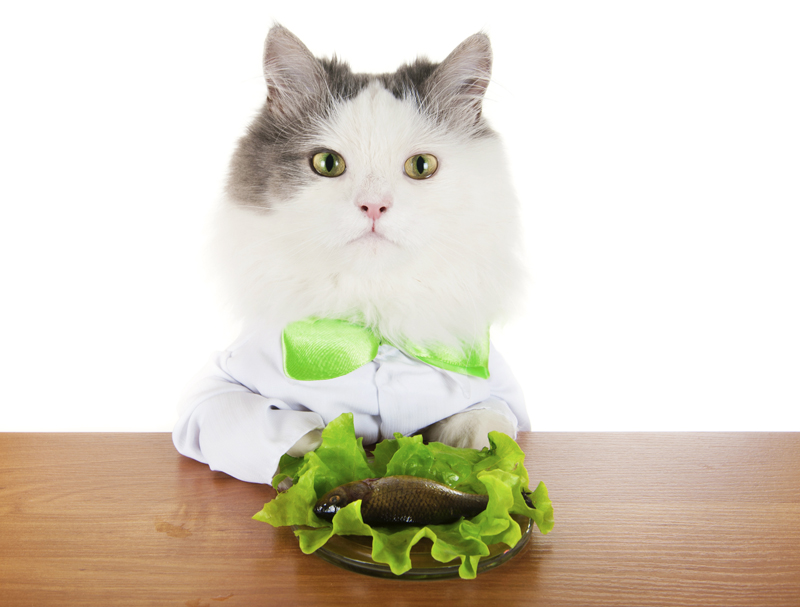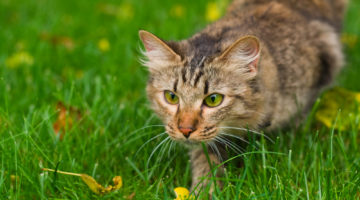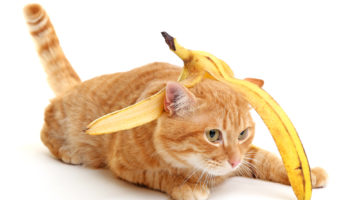Is your cat finicky? Does he have food sensitivities? Alternative protein sources such as pheasant, duck or rabbit can be a healthy and tasty solution.
When he was young, my cat suffered from diarrhea more than seemed normal. The problem cleared up when I stopped feeding him cat food made from beef. It was obvious he had a sensitivity to this common meat, but apart from chicken, lamb and fish, what else could I feed him?
Back then, I wasn’t familiar with, or had access to, the range of alternative protein sources that are now being used in many premium pet foods. In fact, I was amazed to learn that you can now buy cat diets made from duck, pheasant, venison, quail, trout, crab and other “exotic” meats, fish and fowl.
Why feed alternative proteins?
Alternative protein sources have increased in popularity over the last number of years for several reasons. Many people want their cats to enjoy an enhanced quality of life and that includes a more sophisticated diet. Thanks to this customer demand, these diets are not only healthier – as demonstrated by the wide availability of high quality raw or packaged foods made from whole, natural ingredients – but they also encompass a widening selection of special meats once unheard of in the pet food industry. And they’re not hard to find. A growing number of companies sell selected alternative meats in the form of frozen raw diets or canned and kibbled options.
Many people want their cats to enjoy an enhanced quality of life, and that includes a more sophisticated diet.
Also driving the demand for greater variety, as well as better quality, is the increase in dietrelated allergies and food sensitivities, which can manifest as itching or diarrhea. Eating the same thing all the time can lead to these types of sensitivities, a good reason for switching things up and feeding your cat a variety of protein sources.
A varied diet has additional health benefits. “It enhances nutritional balance and soundness,” says holistic veterinarian Dr. Cynthia Harcourt. “Each meat has a unique biochemical makeup and amino acid structure. Feeding your animal a variety gives him a broad base of amino acids and nutritional components.” Giving your cat the same thing all the time can result in nutritional deficiencies. Some meats offer more taurine than others, and they all have different amounts of protein, EFAs, vitamins and minerals.
How are these meats raised?
You might at first feel a little uncomfortable about feeding your companion something like rabbit or quail. “I had quite a few questions,” says Emma, who was interested in switching her ultra-finicky cat to a healthier and more varied diet. “I wanted to be sure the meat was clean and safe, and I also wanted to know where it came from. Because I think of them as wild animals, I had images of someone going out into nature and hunting them.”
In fact, with the exception of wild salmon, most meats used for pet food are raised on farms and ranches, not harvested from the wild. And because the goal of premium food manufacturers is to provide healthy, high quality products, they are just as careful about where they source alternative meats as they are their beef and chicken.
Many of the animals that go into today’s premium pet foods are grass-fed and/or free-range, without hormones or antibiotics, another plus factor for those looking for clean, safe, humanely raised meat for their cats. “Not only do grass-fed animals have higher levels of Omega 3 fatty acids in their systems than those that are fed grain, but they’re also cleaner,” says holistic veterinarian Dr. Nancy Scanlan. “It’s a totally natural thing, so there’s no chance of something like mad cow disease showing up.”
What about non-meat proteins?
Because cats are naturally carnivorous, meat must form the basis of their diet. They cannot be vegetarians. But that doesn’t mean you can’t occasionally supplement your kitty’s meals with non-meat protein sources to add even more nutrition and flavor variation. “I use organic eggs, goat cheese and yogurt,” says Dr. Harcourt. Cottage cheese is another option. Use patience and care when trying your cat on these new foods, and give her only small amounts at first.
How much variety should I give him?
Whether you’re feeding your cat conventional or alternative protein sources, variety remains important. “Allergies are much less of an issue when the animal doesn’t eat the same things for long periods,” says Dr. Scanlan. “Think about what happens in the wild – predators eat whatever is numerous at the time. They aren’t exposed to any one meat for a long stretch.”
Some foods might agree with your cat better than others, however, so you may want to consult your vet before trying new meats. “An individual animal’s health issues are always unique,” says Dr. Harcourt. “He may not be able to tolerate certain proteins depending on the health of his gut and the integrity of the mucus membranes and intestinal flora. As much as possible, though, I suggest rotating foods so that mainstream protein sources are used alongside alternative ones.” By regularly feeding different foods, you can expose your cat to a healthy variety of EFAs and amino acids. And because alternative meats are generally only slightly more expensive than beef, lamb and poultry, introducing them to your cat’s diet isn’t going to break the bank.
As with any diet switch, take your time when changing to alternative protein sources and progress slowly. A sudden change to a new food, no matter how healthy it is, can cause digestive upset in a cat, especially if he’s been eating only one food or flavor for months or years and isn’t used to any variety. Add very small amounts of the new food to his existing diet to start, and gradually increase the amount while decreasing the old food, carefully monitoring his reaction to make sure he doesn’t get diarrhea. If he does, simply scale back on the new food for a few days, until his system balances itself again. Some cats will take to the switch fairly quickly, with no major digestive repercussions, but others may take weeks to acclimatize to the new food. Be patient.
Emma started feeding her cat alternative protein sources and has been delighted with the results. “Tinker’s in better health and actually looks forward to mealtimes. She especially loves rabbit and trout and also enjoys a little cheese and egg from time to time. It’s such a pleasure to see her enjoy her food!”
Resources
AvoDerm, www.avodermnatural.com
Blue Buffalo, www.bluebuff.com
Evanger’s, www.evangersdogfood.com
Mulligan Stew, www.mulliganstewpetfood.com
PAWS-itively Raw, www.paws-itivelyrawfoods.com
Petcurean, www.petcurean.com
Primal Pet Foods, www.primalpetfoods.com







No Comment